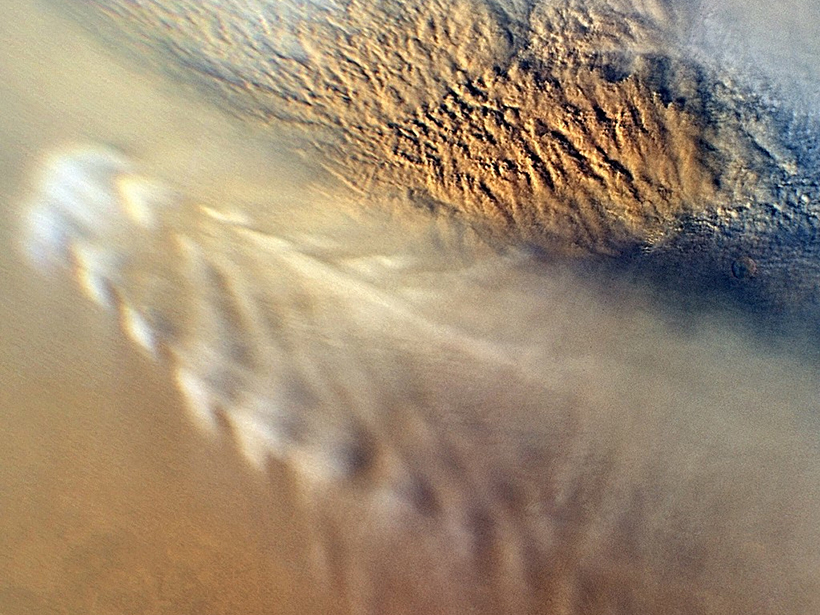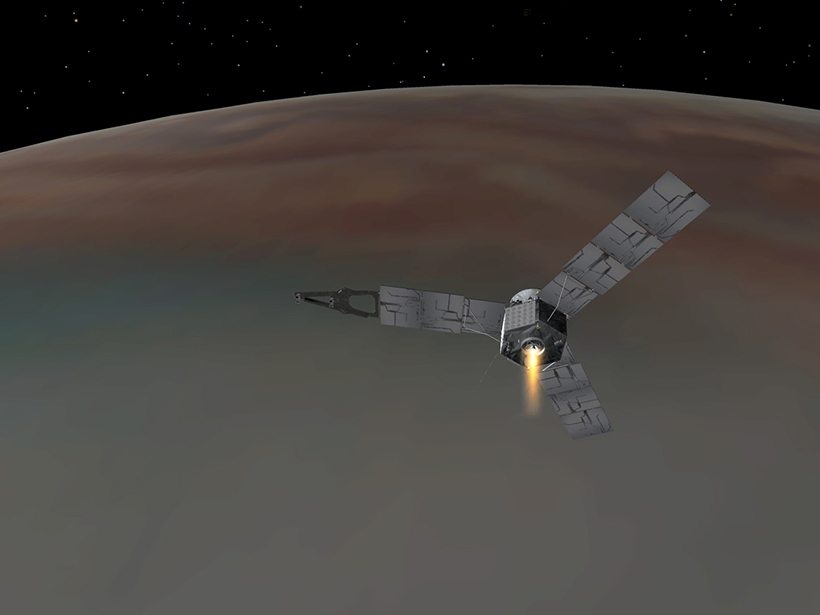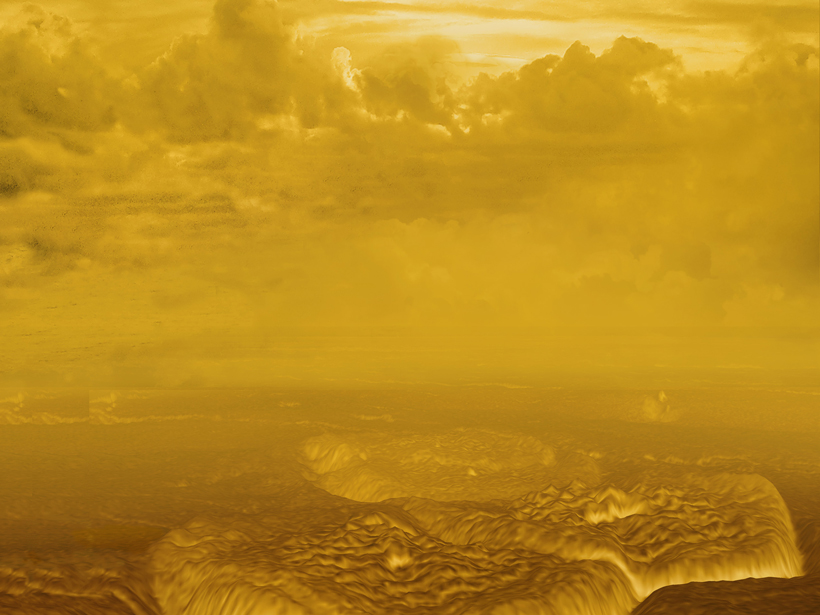Mars is even more like Earth than we thought, according to a statistical analysis of the planet's swirling atmosphere.
planetary atmospheres
Even the Magnetosphere Has Problems
In a new conference and collection of papers, international space physicists narrow down the enigmas that puzzle magnetospheric science.
Juno Spacecraft Nails Its Orbit Around Jupiter
The mission will spend 20 months collecting data on the planet's core, its magnetic field, and the composition of its atmosphere.
Comparing Planetary Climates to Investigate Climate Systems
Comparative Climates of Terrestrial Planets II (CCTP2 ): Understanding How Climate Systems Work; Moffett Field, California, 8–11 September 2015
Hubble Gazes at Europa's Aurora
Scientists get their best glimpse yet of the shimmering phenomena on one of Jupiter's most intriguing moons.
Demystifying Mercury "Hollows"
Spectral data from NASA's MESSENGER spacecraft indicate that the properties of the depressions on Mercury's surface can vary within a single crater and that these differences may correlate to age.
What Caused the Sudden Heating of Uranus's Atmosphere?
A recently observed temperature reversal on Uranus may offer a clue to a long-standing mystery: Why are the upper atmospheres of gas giants so hot?
Atmospheres Can Collapse on the Dark Sides of Planets
Planets that orbit close to their stars might lose their atmospheres along with any chance of life, but new models show a way in which these planets may retain their atmospheres and habitability.
Andrew F. Nagy Receives 2015 John Adam Fleming Medal
Andrew F. Nagy was awarded the 2015 John Adam Fleming Medal at the American Geophysical Union Fall Meeting Honors Ceremony, held on 16 December 2015 in San Francisco, Calif. The medal is for "original research and technical leadership in geomagnetism, atmospheric electricity, aeronomy, space physics, and related sciences."
First Results from the MAVEN Mission to Mars
Geophysical Research Letters publishes First Results from the MAVEN Mission to Mars, demonstrating a remarkable achievement of NASA's MAVEN team and the broader scientific community.









